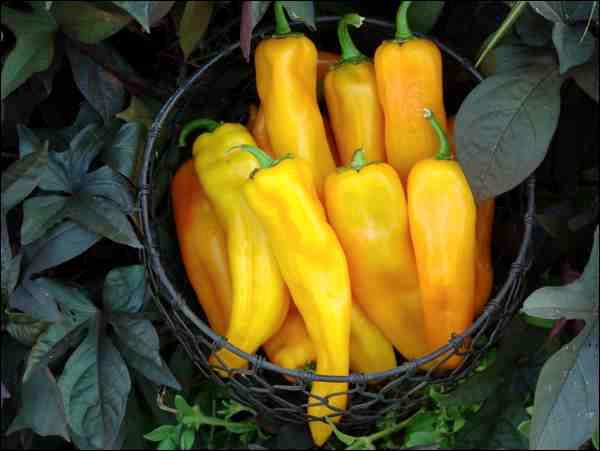All-America Selections (www.All-AmericaSelections.org), a non-profit organization, has been testing and providing unbiased recommendations for new flower and vegetable varieties for more than 80 years.
Plants are tested in several locations around North America including some locations in Canada. In years past, plants had to perform well in all locations to be awarded the coveted AAS stamp of approval. This year, they've added regional winners to account for geographic and climatic differences. Last week I described the 2014 winning flower cultivars; this week we're on to the vegetables.
Marcotte is a compact (10 - 24 in. tall x 10 in. wide) bush green bean, equally at home in containers as in garden beds. Long, slender, stringless pods are held well above the green foliage for easy picking. Plant 2 - 3 in. apart with rows spaced 12 in. apart. For season long picking, plant as soon as the danger of frost is past (late May/early June) with successive seedings two weeks apart until July. Days to harvest from planting are 50 days.
Pick-a-bushel is an early, heat-tolerant, semi-bush (10 - 24 in. tall x 24 - 26 in. spread) cucumber ideally suited for northern areas like Saskatchewan. Plants produce up to 18 - 20 cucumbers. Fully mature fruit are 3 - 6 in. long. Picked early, they make great pickles either as gherkins or larger but they are also excellent fresh in salads having a firm texture and sweet taste. Because of their compact size you can grow them in containers as well as in the garden. Plant in hills 10 in. apart after last frost. Consider staking or trellising to save space and keep the fruit off the ground. Fifty days to harvest.
Mama Mia Giallo yellow sweet pepper produces several elongated (seven - nine in.) fruit per plant. A fairly sturdy plant at only 24 in. tall, it may require staking in windy areas. In Saskatchewan, start indoor to transplant in early June, 15 in. apart in rows three feet apart. Pick fruit when fully yellow for best flavour; 85 days to harvest. Enjoy fresh, grilled or roasted.
With a name like Cinderella's Carriage, it could only be a pumpkin. Vigorous vines produce as many as five - seven large (18 - 20 lb.), flattened (15 - 18 in. diam.), reddish-orange fruit per plant. For the lucky gardener, an occasional pale blue pumpkin is produced. Sow three seeds per hill directly in the ground (transplant not recommended) in late May/early June, two - three feet apart. Can be used for fall decoration but is also great baked as a vegetable or as pie filling. Flavour is described as sweet and nutty - yummy! Harvest when the skin loses its glossy sheen, about 100 days after sowing.
This year, three tomatoes made it to the finals. First is Chef's Choice Orange, an indeterminate vine (requires staking) that produces 20 plus large, bright orange beefsteak tomatoes 75 days after transplanting. Reminiscent of heritage cultivars, the fruit is described as flat boat-shaped with sweet, mild flavour and firm texture. Great fresh or in soups and sauces.
Next is Fantasico, producing up to 12 lb. (approx. 350 fruit) of deep red grape tomatoes on a compact determinate bush. Does equally well in containers, hanging baskets and in the garden - use a cage if growing in the ground. Harvest starts as early as 50 days after transplant.
Rounding out the trio is Mountain Merit, a nice all-around, deep red, medium-sized tomato ideal for slicing, salads and sandwiches. Up to 45 fruit are produced on bush-type plants; harvest starts about 75 days after transplant.
All three plants have good to excellent resistance to various diseases with the latter two having some late blight tolerance. As with all tomatoes, ensure soil is kept evenly moist to prevent blossom-end rot, a nutrient deficiency problem caused most frequently by drought stress.
If you're interested in seeing some of the past AAS flower winners, visit the demonstration garden on the south side of the Agriculture and Bioresource building at the University of Saskatchewan.
- This column is provided courtesy of the Saskatchewan Perennial Society (www.saskperennial.ca; [email protected]).
Upcoming events:
Wednesday, Jan. 22, 7:30 p.m. Let's Talk Turkey. Sit back and enjoy the horticulture, culture and history of Turkey through Jackie Bantle's eyes as she takes you on a virtual tour of her recent travels. Emmanuel Anglican Church, 607 Dufferin Ave. (Saskatoon). Go to the backdoor and down the stairs to the basement. Hosted by the Sask. Perennial Society. Free.




